Does your guitar keep going out of tune? You’ve put on new strings, checked the bridge, everything. The problem might lie with your tuners.
It might be time to get new tuners for your guitar. And not just any old tuners, but locking tuners. These will keep your guitar in tune for longer, to keep you rocking for longer.
Top 3 - Locking Tuners
Preview | Product | Price |
|---|---|---|
Let us take a look at some of the best locking tuners for your guitar.
The Best Locking Tuners for Different Guitars
Fender’s own locking tuners are both fantastic and a bit of a disappointment.
They are very well made. That Fender quality is very present, which isn’t too surprising.
Installation was also super easy, which I believe is high on the list of requirements for any tuners. They also fit most Strats and Teles, so you don’t have to worry about whether or not they will work with your guitar.
They also look like any other Fender tuners. I don’t care too much about what my tuners look like since no one is really going to notice them. But I know some Fender players want their guitar to look like a Fender, top to bottom.
As for their actual performance, it is fairly standard Fender fair. I might even say they are a bit better than stock Fender tuners, even the ones found on the American Professional series.
Tuning is nice and accurate, and they turn smooth and easily. They also stay in tune great, I only had to make very slight adjustments maybe every 30 minutes of hard playing. And these were very, very fine adjustments.
All of this quality and performance comes at a very affordable price. Which brings me to the disappointing part of these tuners.
I don’t understand why these aren’t just standard on every Strat and Tele. I can’t imagine that putting these on a guitar is going to push the price up too much, if at all.
If you have a Strat, Tele, or any guitar really, I would highly recommend replacing the stock tuners with a set of these. And considering the price, they are even a great fit for Squier guitars. They can have notoriously bad tuners.
Locking tuners aren’t just an electric guitar feature. While not as common, acoustic guitars can also benefit from locking tuners.
The Grover 502C Roto-Grip tuners are an excellent replacement for your acoustic guitar’s old tuners. They even come in a 3x3 configuration, almost like they were meant for acoustic guitars. Of course, if you have a Gibson or Epiphone, they work just as well.
These are very well made tuners, like you would expect from any Grover tuners. They are made from steel and have a very nice chrome finish.
I really like the look of these tuners. They look really nice, but are still quite discrete. If you want your tuners to not be too eye-catching, these are a great choice.
Installation is also very easy. I found them to be a fairly straightforward drop in replacement.
As for functionality, the 502Cs have very smooth and precise tuning. They also stay in tune very well.
Acoustic guitars benefit especially from a set of these tuners. Since there is less interference from tremolo and you are generally not playing as aggressively, you will almost be able to just tune your guitar once and forget about it.
Overall, I really like these tuners and I think you should certainly consider getting these as an upgrade for your acoustic or electric. The only downside is they seem to only be available in 3x3 configuration.
That limits them a bit in terms of which guitars you can use them on. So, you are a bit out of luck with these if you have a Fender or Ibanez. Luckily, they come in a few different finishes like black and gold if you want something more or less flashy.
D’Addario is no stranger when it comes to high-quality after market parts for guitars. Their pickups are some of the best around.
So, I was fairly confident that their Auto-Trim tuners were going to be nothing short of great. And great they absolutely are.
These are really solid tuners. They feel super sturdy and are super smooth to use.
Tuning stability is also top notch. These tuners were clearly designed with shredders like myself in mind.
I was abusing my whammy bar and these tuners would just not budge. My strings just stayed in tune the whole time.
But fast and aggressive playing isn’t the only thing that these tuners were designed for. D’Addario was also gone out of their way to make restringing as easy as possible.
There are two main features that D’Addario has added specifically for putting strings on your guitar. The first is a little silver dot on the posts.
This is just a simple way for you to clearly see where your strings need to go. This is very helpful if you are restring in a dark area like backstage.
The second is the auto-trim feature, the feature these tuners are named after. This feature trims the excess string once they have been tuned to pitch.
This means that you don’t need to carry an extra pair of pliers with you. You simply tune the strings and then the excess quite literally just falls off.
This is such a cool feature that I never thought I needed until I experienced it with these tuners. It is a shame that this isn’t a feature on every set of tuners.
The Auto-Trims are absolutely incredible. They also come in different finishes as well as 3x3 sets.
Graph Tech is another well-known brand in the after market parts space. Their Ratio Tuners offer a few unique features that you won’t find on any other tuners.
What is interesting about these tuners is that they don’t share a tuning ratio. Instead, each tuner has its own tuning ratio going from 12:1 to 39:1.
This makes each tuner as precise as possible for each specific string. The tuners are even number so that you know where to mount each one.
That tuning accuracy isn’t a lie, either. One turn of the pegs is about one whole tone.
My favorite thing about these tuners is the way installation works. Graph Tech uses what they call InvisoMatch mounting plates.
Instead of mounting the tuners directly onto the guitar’s headstock, they are mounted onto these plates. These plates then basically hold the tuners onto the headstock. They also come with four different sets of mounting plates.
This means that you won’t need to drill new holes into your headstock, possibly damaging it. You just need to match the right mounting plate with the corresponding holes on your headstock.
This doesn’t add much time to the installation process. I found these tuners to be just as quick and easy to mount as any other tuners. Quicker even, considering you don’t need to drill new holes.
These features do come at a bit of a steep price. I personally would probably just go with tuners that are more affordable, but still offer a close experience.
But if you are looking for the most accurate tuners, then you probably aren’t going to find anything better than these.
Hipshot might not be as well-known as the other brands on this list, but they have been around for quite some time. They are also known for being innovators, with things like the Xtender.
Their Grip-Lock tuners might not reinvent the locking tuner, but that doesn’t make them any less exceptional. These are incredibly well-designed and well-built tuners.
They are super stable and accurate. I had no issues while tuning, and strings stayed in tune, maybe even a bit better than some of the other more expensive tuners on this list.
I have seen some call them bulky. I don’t think they stand out much more than other tuners. The pegs are actually nicely sized and shape, giving you great grip while tuning.
The Grip-Locks come with mounting plates for installing them onto your headstock. But they use a universal mounting plate, unlike the Graph Techs that have separate sets.
They also don’t use individual plates, but rather two plates for either side of the headstock. This makes them quicker and easier to mount. I am actually a bit curious as to why Graph Tech hasn’t gone with a similar system.
These are certainly another great choice if you are looking to upgrade your tuners without spending too much. They are just great tuners through and through.
I suspect some guitarists might not like the size of the mounting plates. It does make the back of your headstock look a bit cluttered, but no one except you is going to be looking back there.
As a bonus, they also have a set specific for 7-string guitars. So, no need to buy a separate tuner for your 7-string.
6. Grover 406C6
The second set of Grover tuners, the 406C6 tuners are actually quite similar to the 502C Roto-Grips.
In terms of build quality, these are on par with the Roto-Grips. They feel just as solid and are just as smooth. But there are a few differences, otherwise I wouldn’t have put them on the same list.
These are actually a mini version of the standard Grover tuners. That means that they are slightly smaller than a standard tuner in general.
If you are looking for something more discrete, these are a great choice. They are also great if your guitar has a smaller headstock, like a Tele. Larger tuners can easily look a bit strange on a smaller headstock, and these are a great alternative.
Their smaller size also mean that they are mechanically a bit different. Where tuners like the Roto-Grips lock strings with the turn of a rear knob, these use an interlocking post system.
When your string is placed through the post, the first few turns of the peg doesn’t tune the string. Instead, the string first gets locked in, and then the post starts to turn to actually tune it.
This is a bit of strange system at first. You have to kind of tell yourself that you need to give it one extra turn.
But it is a system that I like. Some locking tuners can be a bit of a guessing game to know when the strings are locked. With these you just turn the peg and the strings lock in automatically.
I would still just go with the Roto-Locks since they are just a few bucks extra. But if you want tuners that are a bit more straightforward to use, then these are a great choice.
7. PRS SE
PRS guitars are one of the original pioneers of the locking tuner. The first ones date back to 1985, and the PRS SE locking tuners are direct descendants of those.
These tuners are great right from the start. The first thing I noticed was the fact that the tuners aren’t one color.
The entire tuner has a very nice chrome finish, but the posts are gold. This gives the tuners a unique look while giving the front of your headstock a sharper look.
The tuners themselves are also great to use. String changes are a breeze and the tuners lock them in tightly.
If you have a tremolo system, these are especially great. I was whammying away and my strings just stayed in tune.
Tuning is also super smooth, accurate, and fast. Their 15:1 tuning ratio makes for some quick tuning. Something that is always useful when you snap a string during a show and need to do a quick replacement and tuning.
Since these are designed for PRS guitars, they might not fit on every guitar. I would definitely make sure they are going to fit before buying. Unless you don’t mind drilling holes into your headstock.
Another issue I have is that they only seem to come in a 3x3 set. So, Fender, Jackson, Ibanez, etc. won’t be able to benefit from these.
They are also a bit on the expensive side. I do think the price is worth it in this case since these tuners are so great. If you have a PRS or even a Gibson, I would consider these as an upgrade option.
If you are looking to replace the vintage tuners on your guitar, or give your guitar a vintage look, then look no further than Guyker. Their Vintage tuners look like they were made in the 1920s, with the modern benefit of a locking system.
I had actually never heard of Guyker before testing these tuners. So, I was interested to see how they stacked up against big names like D’Addario and Grover.
Right off the bat I was liking what I was seeing. These are some cool looking tuners. They genuinely look like they were made in the ‘20s or ‘30s.
Installation was also super easy, with each tuner simply being screwed into place. I also like how snugly the tuners sit together.
Stringing and tuning is also easy and accurate. The locking mechanism is great and was able to keep the strings in tune without any trouble.
All of this style and quality comes at an incredibly low price. If you have a cheaper guitar like a Squier or a cheap acoustic, these are an easy upgrade.
I can almost guarantee that they will be an improvement over the stock tuners. With the added benefit of looking fantastic.
That being said, the lower price does come with some downsides. The tuners are a bit stiff. I had to give the pegs a bit more elbow grease to get them to turn.
I am also a bit concerned as to how they will hold up over time. I also don’t know how well these tuners will hold up over time. Will the locking mechanism still work in 10, 20 years?
But if you want a cheap upgrade, these are a great choice.
What are Locking Tuners?

You might be thinking “Aren’t all tuners the same?”. But you actually get two types of tuners: locking and non-locking.
The name says pretty much exactly what these tuners do, they lock the string into place. Non-locking, of course, doesn’t lock the string.
With non-locking tuners, you simply place the string into the opening at the top of the post. You then turn the peg to wrap the string around the post until it was tight and in tune.
Locking tuners use a second knob to push a pin up through the post that then pins the string to the post. This restricts the strings movement on the post, keeping it in tune.
Is Stringing Harder with Locking Tuners?
Locking tuners aren’t much different from normal tuners. The only real difference is the extra knob at the back.
In fact, locking tuners are actually faster in most cases. This is because you don’t have to wind the string to tighten it.
Because you have a pin holding the string to the post, you can just pull the string through the post and it will be tight. You don’t have to spend two minutes winding the string around the post to tighten it.
Are Locking Tuners More Expensive?
Because of the extra parts and engineering involved with locking tuners, locking tuners do cost more than normal tuners. But you might be surprised to discover that locking tuners don’t actually cost that much more than normal tuners.
There are expensive locking tuners, but a good set is usually just around $10 - $20 more than normal tuners. This makes them a cheap and easy upgrade for the stock tuners on guitars that can often be quite bad.
How Hard are Locking Tuners to Install?
Locking tuners are pretty much the same as normal tuners. Most of them are a simply drop in replacement for stock tuners.
Some locking tuners come with mounting plates. This doesn’t add much to the installation, and can even make installation easier in some cases.
Since tuners aren’t universal, a Fender tuner won’t necessarily fit on an Ibanez for example, installing new ones can be a hassle. The screw holes on the tuners might not line up with the holes on your headstock.
You can drill new holes to mount the tuners. This can cause damage, however, if you don’t know what you are doing or aren’t being careful.
Mounting plates solves the issue be acting like a more universal fit for different guitars. Of course, this won’t make them fit every guitar out there, but will make them fit a wider variety.
Choosing a Good Set of Locking Tuners
Finding a decent set of locking tuners is actually fairly easy. If you look at the $60 - $80 range, most locking tuners are fairly similar.
They all have similar tuning and gear ratios, so they are similar in accuracy and smoothness. It will mostly be up to what you think looks good.
What shape do you want your pegs to be? Do you want a closed or open back? What finish do you want?
If possible, I would just recommend testing the stiffness of the pegs before buying a set. You want the turning to feel comfortable to you and as easy as possible to turn.
And lastly, while cheaper tuners can be very good, like with the Guyker, I would be careful buying a cheaper set. Nine times out of ten, your experience is just going to be better with a more expensive set of tuners.
Conclusion
Even if you don’t need to replace the tuners on your guitar, it is worthwhile to look at locking tuners.
They are just a great upgrade for any guitar. I would even go so far as to say that they are an essential upgrade.
They just make life that little bit easier for a guitarist. When your guitar stays in tune for longer, that is just one less thing to worry about.
And on top of that, locking tuners are one of the cheapest upgrades to do.

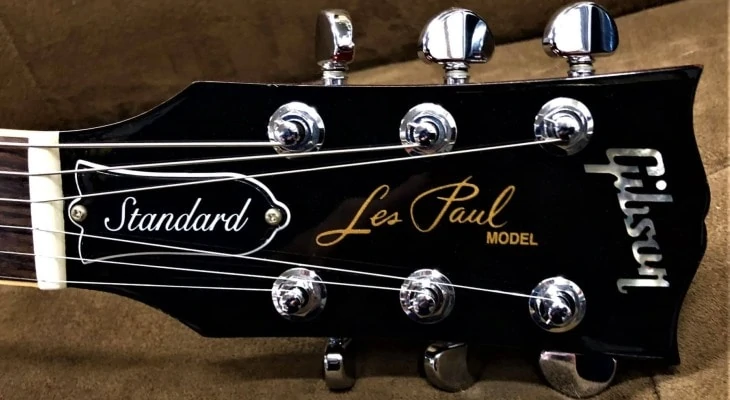

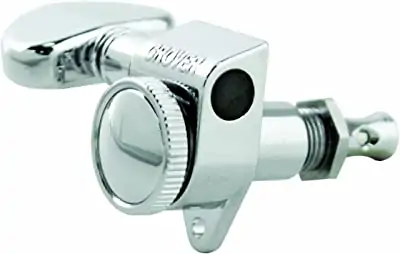
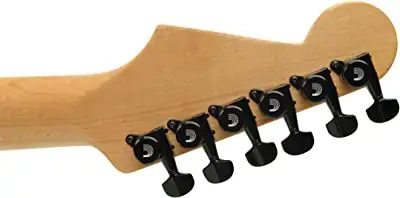
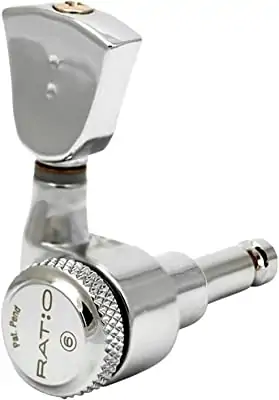


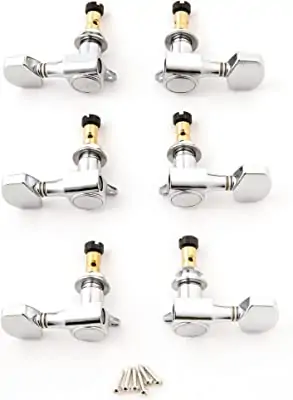

Whenever I find a set of locking tuners, I usually buy them, knowing that at some point I will upgrade one of my guitars! I love them!
Locking tuners are for quick and easy string changes, that’s it. Any decent tuner that’s properly strung will hold tune just as well as Locking tuners. Tuning problems are almost always related to the nut, could be the bridge or trem on occasion but it’s mostly the nut. And don’t forget that most of the brands that you mention don’t just have one type of headstock. Gibson and Epiphone have models that do have 6 inline tuners, Ibanez and Jackson have several 3×3 models.